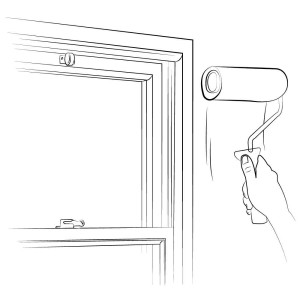All Categories
Featured
Table of Contents
Windows Of Opportunity: Your Guide To High-performance ... in Burswood Western Australia
Laminated glass is often used in areas in the house most prone to injury from human impact such as restrooms, doors, around staircases and in areas near the floor (it meets the requirements of 'shatterproof glass' that is mandated for usage in these locations by Australian Basic AS 1288 Glass in buildings).
Toughened glass has been 'tempered' by being reheated and quickly cooled once again. This process makes it much stronger than basic glass it can withstand higher effect loads prior to breaking. It likewise makes it much safer due to the fact that, when it does shatter, it burglarizes lots of little cubic pieces instead of unsafe shards.
Single, Double Or Secondary Glazing, Which Is The Best ... in Bullsbrook WA
Toughened glass has no thermal or acoustic benefits over other glass of the exact same toning or thickness. Secondary glazing is where single-glazed windows are retrofitted with a transparent acrylic or glass sheet connected to the inside of the frame or openable sash with a secondary frame or with magnetic strips.


Secondary glazing will not carry out also thermally as a manufactured IGU, because it is impossible to totally seal the border, however it can supply excellent noise control. Window movies are a thin polymer film consisting of an absorbing dye or reflective metal layer, with an adhesive backing. They adhere to your glazing to alter its colour or make it reflective.
Home Window Glazing - Sustainability Victoria in Perth CBD Perth
Applied to existing glass, some window films can cut in half the total SHGC of the window by taking in and/or showing solar radiation. This can be particularly useful in hotter climates where cooling is the main issue, or on east and west elevations directly exposed to long durations of sunlight. Nevertheless, window films may also decrease noticeable light transmittance.

For this factor, it is generally best to utilize an accredited installer of window film. Frames have a considerable effect on the thermal performance of doors and windows, due to the fact that energy can be gained and lost through the frame, as well as through the glass. Different types of frame will enable different levels of heat gain and loss, so careful option of frame is very important for reliable passive style.
Save Energy With Double Glazed Windows in Ocean Reef WA
Nevertheless, aluminium is also a really great conductor of heat and will reduce the insulating value of a glazing unit, unless particularly engineered to minimize this. A 'thermally broken' frame is made up of 2 aluminium areas connected by a structural insulator (typically a low-conductivity structural polymer). This 'breaks' the thermal connection through the aluminium and minimizes the heat streaming through the frame.
They can be costly, however costs are reducing as they become more typical. Timber frames are an excellent natural insulator that can suit some home designs. Lumber frames must be made from types that have naturally high resilience or be dealt with to prevent decay and contortion. Inspect that the timber is sourced from a sustainably managed forest.
What Are Double Glazed Windows? in Wilson WA
(weather condition stripping) is set up.
u, PVC windows and doors have exceptional thermal efficiency Photo: Ben Wrigley (Light House Architecture and Science) Composite frames use aluminium profiles on the outer areas with either a timber or u, PVC inner area. These combine the low maintenance and resilience of aluminium with much improved thermal efficiency.
Table of Contents
Latest Posts
How Are Double Glazed Windows More Energy Efficient? in Helena Valley Perth
Why Should You Have Double-glazed Windows This Summer? in Secret Harbour WA
Double Glazed Windows Brisbane in Mosman Park Western Australia
More
Latest Posts
How Are Double Glazed Windows More Energy Efficient? in Helena Valley Perth
Why Should You Have Double-glazed Windows This Summer? in Secret Harbour WA
Double Glazed Windows Brisbane in Mosman Park Western Australia